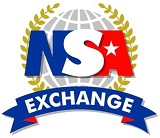Product traceability has become an indispensable industrial process. Today, logistics centers are responsible for tasks as diverse as location management, order preparation, product dispatch or even item customization according to customer demand.
The increase in the number of references in a warehouse leads to increasingly complex logistics operations. In this context, poor control of incoming and outgoing goods, as well as of the status of items, can lead to serious errors and cost overruns for the company.

Tabla de Contenidos
What is product traceability?
The concept of traceability refers to the monitoring of the entire process of production, processing and distribution of a product, from the procurement of raw materials for its manufacture to its arrival at the final consumer.
Having a good product traceability system helps to comply with:
- Quality assurance: Tracing each process drastically reduces the number of errors that take place in the warehouse, thus ensuring the highest quality of items for the end customer. An example could be applied to production tasks in a warehouse. When a material is in poor condition, only by controlling the operation through a warehouse management system can it be traced and identified which end product has been produced with the affected goods and thus be quickly withdrawn from the market.
- Hygiene standards: Any product traceability procedure must take into account effectiveness and hygiene at every logistical stage. In this regard, implementing a WMS in the facility makes it possible to recognize which product or batch of goods may have been affected by errors in hygiene standards (loss of cold, product spillage, poor preservation, etc.).
- Safety in compliance with current regulations: Product traceability makes it easier to verify that the specific legislation of each product design, manufacturing and distribution process is complied with.

Traceability and its regulation
Traceability is becoming more and more common, both for logistical needs and as a requirement of customers and suppliers. In fact, there are sectors that already have specific legislation to ensure adequate control of product traceability.
This is the case of foodstuffs. European Regulation 178/2002 defines traceability as a risk management requirement to follow the traceability of an article through any stage of production, processing or distribution.
Since 2005, the European Food Safety Authority has been providing advice to companies (and interested consumers) to ensure the traceability of food and feed at all stages of the supply chain.
But it is not only the agri-food sector that must ensure the traceability of its products, but also the pharmaceutical industry. This industry has a special legislative framework, due to the harm that would be caused to society if drugs in poor condition were to be dispensed.
Thus, Royal Decree 725/2003 of 13 June 2003 obliges manufacturers, laboratories and wholesalers to inform pharmacies of any key data required to provide information on the traceability of a drug:
- Quantity received and supplied
- Transaction and expiration date
- Batch identifier
- Stages and processes passed in the supply chain
The prestigious international standardization organization, ISO, includes product traceability in several of its reference standards. Without going any further, the ISO 9001 standard, recognized in the field of quality management systems, establishes the need to identify and know the status of the product.
In addition, for sectors with greater demand for traceability, such as food, ISO launched in 2007 the international standard 22205, which distinguishes companies committed to traceability in the food chain for human and animal consumption.

The solution: automated traceability
In today’s logistics, more and more players are demanding to know in detail every stage of the supply chain through which a product passes. For this reason, traceability requires tools that record information accurately and quickly.
Traditionally, effective methods have been used to manage product traceability, such as barcodes or QR codes for receiving and dispatching goods in a warehouse, especially when multiple references are involved in the operation.
However, for less complex operations – for example in the reception or preparation of orders of many units of a single reference – other technologies such as RFID have been progressively gaining ground, making it possible to speed up the process and multiply the productivity of the installation.
So how can product traceability be controlled without reducing warehouse efficiency? In addition to increasing operational productivity, processes such as warehousing and order picking must be automated to ensure compliance with hygiene and safety standards for both the goods and the facility’s workers.
Likewise, robotics in the warehouse facilitates the drastic reduction of errors in the processes, which makes it possible to offer a quality, agile and efficient service to the end customer.
You may also like: Experts warn that, due to the supply chain crisis, food shortages in supermarkets will continue for the next 4 to 6 weeks due to Omicron.


Leave a Reply